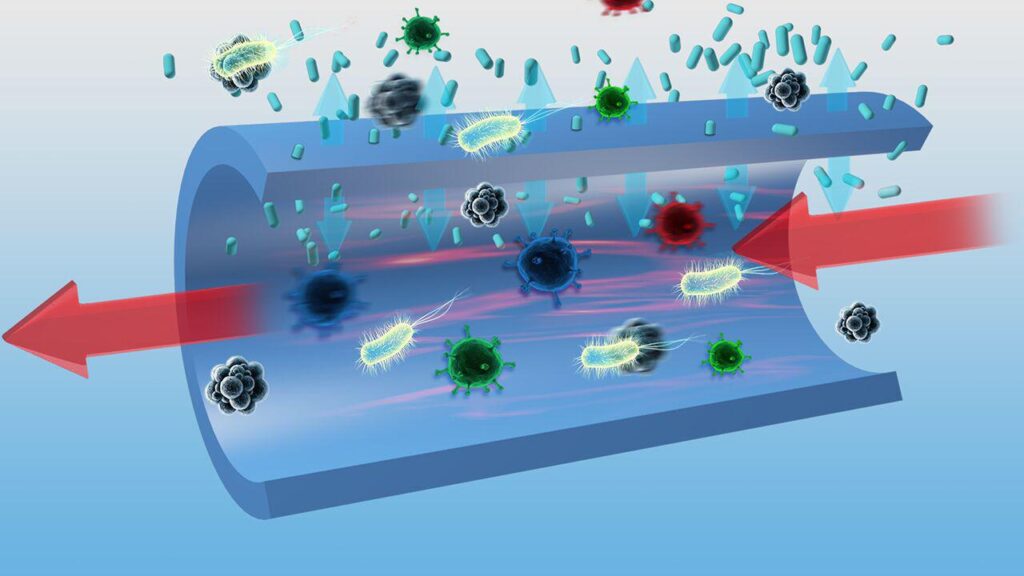
Water storage tanks are critical components of infrastructure, serving various purposes from residential use to agricultural irrigation. However, one significant concern associated with these tanks is microbial growth, which can compromise water quality and pose health risks. To combat these issues, anti-microbial coatings have emerged as an effective solution. These specialized coatings not only protect the integrity of water supplies but also offer a range of benefits that enhance the safety and efficiency of water storage systems.
What Are Anti-Microbial Coatings?
Anti-microbial coatings are protective layers designed to inhibit the growth of harmful microorganisms, including bacteria, viruses, and fungi. These coatings can be formulated with various active agents, such as silver ions, copper, or other biocidal substances. By applying these coatings to the interior surfaces of water storage tanks, operators can create an environment that deters microbial proliferation, ensuring safer water for consumption and use.
1. Enhanced Water Quality
The primary advantage of anti-microbial coatings is their ability to improve water quality. Microbial contamination can lead to the presence of harmful pathogens, which are detrimental to human health. Anti-microbial coatings effectively reduce the risk of microbial growth, thereby maintaining the purity of stored water. This is especially important in regions where water quality may be affected by environmental factors or contamination from nearby sources.
2. Prevention of Biofilm Formation
Biofilms are clusters of microorganisms that adhere to surfaces within water storage systems. They can lead to serious issues, including clogging of pipes and the release of toxins into the water supply. Anti-microbial coatings help prevent the formation of biofilms, ensuring that the tank’s interior remains clean and functional. By minimizing biofilm development, these coatings contribute to more efficient water flow and reduce maintenance needs, ultimately extending the lifespan of the storage tank.
3. Improved Hygiene and Safety
For public facilities, hospitals, schools, and similar environments, maintaining high hygiene standards is essential. The application of anti-microbial coatings in water storage tanks significantly enhances safety by reducing the risk of waterborne diseases. By providing a barrier against microbial growth, these coatings help safeguard the health of individuals who rely on the stored water, ensuring that it remains safe for drinking and other uses.
4. Cost-Effectiveness and Long-Term Savings
While the upfront cost of anti-microbial coatings may be higher than traditional materials, the long-term benefits can outweigh these initial expenses. Reduced maintenance and repair costs are significant advantages, as tanks that are less prone to microbial contamination require fewer interventions. Additionally, by preventing potential health issues related to water quality, facilities can avoid costly liabilities and health-related expenses. Over time, the use of anti-microbial coatings proves to be a wise economic choice.
5. Environmental Considerations
Many anti-microbial coatings are designed with environmental safety in mind. Non-toxic formulations are often available, ensuring that harmful substances do not leach into the water supply. This aspect makes anti-microbial coatings an eco-friendly option for water storage systems. By choosing environmentally responsible coatings, facilities can demonstrate their commitment to sustainability while also providing safe drinking water.
6. Versatile Applications
Anti-microbial coatings are versatile and can be applied to various materials commonly used in water storage tanks, including metals, plastics, and concrete. This adaptability allows for their use in diverse applications, from residential water tanks to large municipal storage systems. Additionally, these coatings can be customized to meet specific requirements, such as corrosion resistance or UV protection, enhancing their functionality in different environments.
Conclusion
The incorporation of anti-microbial coatings in water storage tanks offers numerous advantages, including enhanced water quality, prevention of biofilm formation, improved hygiene and safety, cost-effectiveness, environmental benefits, and versatile applications. As awareness of water quality and public health continues to grow, investing in anti-microbial coatings becomes increasingly important for maintaining safe water supplies. By adopting these innovative solutions, facilities can not only protect public health but also promote a sustainable future, ensuring that clean and safe water remains accessible for all.


